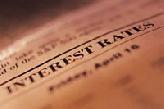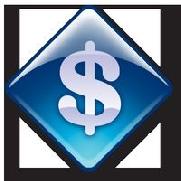
 |
|
| Financial Terms | |
| Productivity |
|
Information about financial, finance, business, accounting, payroll, inventory, investment, money, inventory control, stock trading, financial advisor, tax advisor, credit.
Main Page: investment, financial advisor, money, financial, business, inventory, finance, payroll, |
Definition of Productivity
ProductivityOutput per unit of input, usually measured as output per hour of labor.
Related Terms:process productivitythe total units produced during a period Cost controlThe process of either reducing costs while maintaining the same level of productivity or maintaining costs while increasing productivity. asset turnovera ratio measuring asset productivity and showing the number of sales dollars generated by each dollar of assets control premiumthe additional value inherent in the control interest as contrasted to a minority interest, which reflects its power of control DLOC (discount for lack of control)an amount or percentage deducted from a pro rata share of the value of 100% of an equity interest in a business, to reflect the absence of some or all of the powers of control. Accelerated cost recovery system (ACRS)Schedule of depreciation rates allowed for tax purposes. Agency cost viewThe argument that specifies that the various agency costs create a complex environment in  Agency costsThe incremental costs of having an agent make decisions for a principal. All-in costTotal costs, explicit and implicit. Average cost of capitalA firm's required payout to the bondholders and to the stockholders expressed as a Bankruptcy cost viewThe argument that expected indirect and direct bankruptcy costs offset the other Carring costscosts that increase with increases in the level of investment in current assets. Control50% of the outstanding votes plus one vote. Controlled disbursementA service that provides for a single presentation of checks each day (typically in Controlled foreign corporation (CFC)A foreign corporation whose voting stock is more than 50% owned ControllerThe corporate manager responsible for the firm's accounting activities.  Corporate processing floatThe time that elapses between receipt of payment from a customer and the Cost company arrangementArrangement whereby the shareholders of a project receive output free of Cost of capitalThe required return for a capital budgeting project. Cost of carryRelated: Net financing cost Cost of fundsInterest rate associated with borrowing money. Cost of lease financingA lease's internal rate of return. Cost of limited partner capitalThe discount rate that equates the after-tax inflows with outflows for capital Cost-benefit ratioThe net present value of an investment divided by the investment's initial cost. Also called Diffusion processA conception of the way a stock's price changes that assumes that the price takes on all Dupont system of financial controlHighlights the fact that return on assets (ROA) can be expressed in terms Equivalent annual costThe equivalent cost per year of owning an asset over its entire life.  Exchange controlsGovernmental restrictions on the purchase of foreign currencies by domestic citizens or Execution costsThe difference between the execution price of a security and the price that would have Financial controlThe management of a firm's costs and expenses in order to control them in relation to Financial distress costsLegal and administrative costs of liquidation or reorganization. Also includes Fixed costA cost that is fixed in total for a given period of time and for given production levels. Foreign exchange controlsVarious forms of controls imposed by a government on the purchase/sale of Friction costscosts, both implied and direct, associated with a transaction. Such costs include time, effort, Incremental costs and benefitscosts and benefits that would occur if a particular course of action were Information costsTransaction costs that include the assessment of the investment merits of a financial asset. In-house processing floatRefers to the time it takes the receiver of a check to process the payment and Market impact costsAlso called price impact costs, the result of a bid/ask spread and a dealer's price concession. Market timing costscosts that arise from price movement of the stock during the time of the transaction Net financing costAlso called the cost of carry or, simply, carry, the difference between the cost of financing Opportunity cost of capitalExpected return that is foregone by investing in a project rather than in Opportunity costsThe difference in the performance of an actual investment and a desired investment Price discovery processThe process of determining the prices of the assets in the marketplace through the Price impact costsRelated: market impact costs Replacement costcost to replace a firm's assets. Risk controlled arbitrageA self-funding, self-hedged series of transactions that generally utilize mortgage Round-trip transactions costscosts of completing a transaction, including commissions, market impact Search costscosts associated with locating a counterparty to a trade, including explicit costs (such as Shortage costcosts that fall with increases in the level of investment in current assets. Sunk costscosts that have been incurred and cannot be reversed. Trading costscosts of buying and selling marketable securities and borrowing. Trading costs include Transactions costsThe time, effort, and money necessary, including such things as commission fees and the True interest costFor a security such as commercial paper that is sold on a discount basis, the coupon rate Variable costA cost that is directly proportional to the volume of output produced. When production is zero, Weighted average cost of capitalExpected return on a portfolio of all the firm's securities. Used as a hurdle Cost basisAn asset’s purchase price, plus costs associated with the purchase, like installation fees, taxes, etc. Cost of goods soldThe cost of merchandise that a company sold this year. For manufacturing companies, the cost of raw MACRS (Modified Accelerated Cost Recovery System)A depreciation method created by the IRS under the Tax Reform Act of 1986. Companies must use it to depreciate all plant and equipment assets installed after December 31, 1986 (for tax purposes). Absorption costingA method of costing in which all fixed and variable production costs are charged to products or services using an allocation base. Activity-based costingA method of costing that uses cost pools to accumulate the cost of significant business activities and then assigns the costs from the cost pools to products or services based on cost drivers. Avoidable costscosts that are identifiable with and able to be influenced by decisions made at the business Budgetary controlThe process of ensuring that actual financial results are in line with targets – see variance Cash costThe amount of cash expended. Controllable profitThe profit made by a division after deducting only those expenses that can be controlled by the CostA resource sacrificed or forgone to achieve a specific objective (Horngren et al.), defined Cost behaviourThe idea that fixed costs and variable costs react differently to changes in the volume of Cost centreA division or unit of an organization that is responsible for controlling costs. Cost driverThe most significant cause of the cost of an activity, a measure of the demand for an activity Cost objectAnything for which a measurement of cost is required – inputs, processes, outputs or responsibility centres. Cost of capitalThe costs incurred by an organization to fund all its investments, comprising the risk-adjusted Cost of goods soldSee cost of sales. Cost of manufactureThe cost of goods manufactured for subsequent sale. Cost of qualityThe difference between the actual costs of production, selling and service and the costs that would be incurred if there were no failures during production or usage of products or services. Cost of salesThe manufacture or purchase price of goods sold in a period or the cost of providing a service. Cost-plus pricingA method of pricing in which a mark-up is added to the total product/service cost. Cost poolThe costs of (cross-functional) business processes, irrespective of the organizational structure of the business. Cost–volume–profit analysis (CVP)A method for understanding the relationship between revenue, cost and sales volume. Direct costscosts that are readily traceable to particular products or services. Fixed costscosts that do not change with increases or decreases in the volume of goods or services Full costThe cost of a product/service that includes an allocation of all the (production and Indirect costscosts that are necessary to produce a product/service but are not readily traceable to particular products or services – see overhead. Job costingA method of accounting that accumulates the costs of a product/service that is produced either Labour oncostThe non-salary or wage costs that follow from the payment of salaries or wages, e.g. National Lifecycle costingAn approach to costing that estimates and accumulates the costs of a product/service over Marginal costThe cost of producing one extra unit. Opportunity costThe lost opportunity of not doing something, which may be financial or non-financial, e.g. time. Period costsThe costs that relate to a period of time. Prime costThe total of all direct costs. Process costingA method of costing for continuous manufacture in which costs for an accounting compared are compared with production for the same period to determine a cost per unit produced. Product costThe cost of goods or services produced. Relevant costThe cost that is relevant to a particular decision – future, incremental cash flows. Semi-fixed costs costs that are constant within a defined level of activity but that can increase or decrease when Semi-variable costscosts that have both fixed and variable components. Standard costsA budget cost for materials and labour used for decision-making, usually expressed as a per unit cost that is applied to standard quantities from a bill of materials and to standard times from a Sunk costscosts that have been incurred in the past. Target costingA method of costing that is concerned with managing whole-of-life costs of a product/service during the product design phase – the difference between target price (to achieve market share) and the target profit margin. Unavoidable costA cost that cannot be influenced at the business unit level but is controllable at the corporate level. Variable costA cost that increases or decreases in proportion with increases or decreases in the volume of production of goods or services. Variable costingA method of costing in which only variable production costs are treated as product costs and in which all fixed (production and non-production) costs are treated as period costs. Weighted average cost of capitalSee cost of capital. Control accountAn account maintained in the general ledger that holds the balance without the detail. The detail is maintained in a subsidiary ledger. Cost of goods soldThe cost of the items that were sold during the current period. Related to : financial, finance, business, accounting, payroll, inventory, investment, money, inventory control, stock trading, financial advisor, tax advisor, credit. |